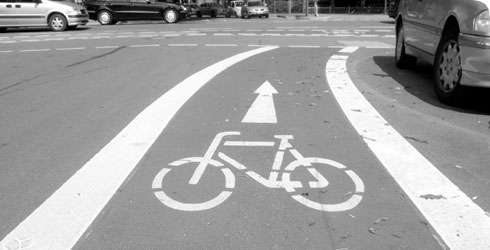Travel and transport
Transport is the third largest, and fastest growing, source of UK greenhouse gases like carbon dioxide (CO2) - the gases that trap heat in the Earth's atmosphere and cause global warming.
Land and air travel contribute almost a third to the average carbon footprint in the UK. For almost any journey, there are greener and healthier alternatives to cars and planes.
Walking
The Government’s recommended level of daily activity to transform health is 30 minutes walking a day. With zero carbon emissions, it’s a win/win for shorter journeys.
Why not walk to school or walk to work? Young children can even take a walking bus to school.
Cycling
Cycling is also carbon neutral and keeps you fit. If you are new to cycling then organisations such as the Cyclists’ Touring Club (CTC) provide cycle training, maps, routes and advice. The National Cycle Network is an easy-to-follow numbered national route system.
If you live in London you can order free guides to cycle routes around the city.
Bus, train and ferry
Rail and coach travel are around 5 times more efficient than car travel, while passengers who fly between London, Paris and Brussels generate up to 10 times more emissions of CO2 than travellers who go by rail.
Compare emissions for different vehicles and modes of transport over any distance at Travel Footprint.
Seat 61 has details of travelling across UK and Europe by rail, coach and ship.
Ferry crossing information is available from aferry.co.uk.
National Express is the UK coach network with many low-fare routes.
Car
Some trips by car may be unavoidable. However, according to Transport for London, you can follow a few simple tips to reduce your engine's workload, which means it will burn less fuel, produce fewer emissions and could save you £120 a year. Tips include:
- Carshare - fewer cars on the road means less carbon emissions
- Avoid using cars for short journeys. Cold engines use twice as much fuel as warm engines so your car is least energy-efficient for the first few miles. Catalytic converters take 6 miles to become more effective. If you are not going far then it is better to walk or cycle.
Toolbox

The Museum's smallest members of staff are our flesh-eating beetles, Dermestes maculates, who strip carcasses to the bone.
